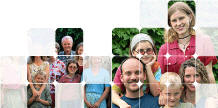|
Treatment

New hope of recovery for patients
with spinal cord lesions, brain injury, brain stroke or other diseases
affecting the Central Nervous System (CNS)
through GIGER MD®
Therapy.
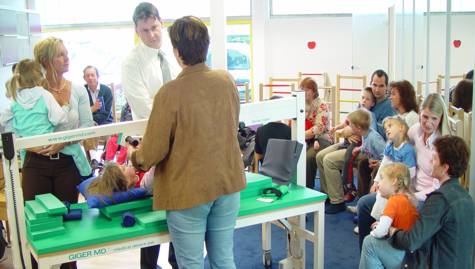
Coordination dynamic therapy is the new efficient method for treating patients with
lesions or diseases affecting the Central Nervous System (CNS). This method
is rehabilitating the CNS, unlike many other methods which affect only the
periphery. Moreover the mobility of people with spina bifida can be improved
at the same time through the medical device GIGER MD® with great success.
Groups of patients suitable for this therapy are:
- Cerebral Palsy
- Brain injury / lesion
- Brain stroke
- Spinal cord lesion
- Parkinson’s Disease
- Other diseases affecting the CNS
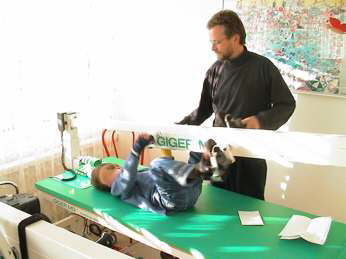
Basis for the
coordination dynamic therapy
The
coordination dynamic therapy is used to treat patients with CNS lesions.
Due to
the 4 new developments in human neurophysiology mentioned below, it is
possible to reorganize the lesioned or functionally impaired human central
nervous system (CNS). The 4 new repair-related concepts are:
-
The CNS is viewed
as a neuronal network which organizes itself. The organization
can be changed by re-learning.
-
The
self-organization is based on a relative (specifically changing)
phase- and frequency coordination of rhythmically firing sub
neuronal networks and single neurons.
-
Neurogenesis and
functional cell proliferation is induced and controlled by
learning. Methods for re-learning basic CNS functions use
especially rhythmic, dynamic, coordinated movements (GIGER MD®
medical device).
-
It seems from the
success in re-learning movements, vegetative and higher mental
functions in patients with CNS lesion that the human CNS has a
second integrative strategy to learn, re-learn, store and recall
network states.
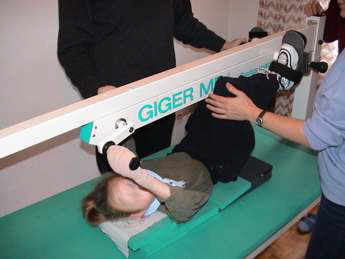
Theory of
coordination dynamics of the lesioned human CNS and re-learning
The lesioned human
CNS can be repaired by re-learning of partially lost phase and frequency
coordination through coordinated rhythmic movements. The severely
lesioned CNS can only efficiently be repaired if integrative, coordinated
functions are re-learned. The re-learning of relative phase and frequency
coordination of the lesioned CNS can be achieved by:
-
Using the special
coordination dynamic therapy device GIGER MD®
which offer exact phase and frequency coordination up to a few
milliseconds for re-learning.
-
The training of
automatisms, postures and old learned movements which are only
little impaired in their functioning by the lesion.
Rather than asking
what is the best method to re-organize the lesioned CNS we should ask what
method is most efficient in re-organizing the lesioned CNS by re-learning.
The increase of the rate of re-learning is determined by 4 factors:
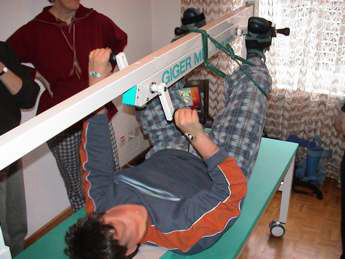
-
The exactness of
the coordination of the performed movements during the therapy,
to functionally reconnect disconnected network parts torecouple
arms or legs that cannot be moved.
-
The increase of
the intergrativity of the coordination dynamic therapy, which
increases the number and complexity of simultaneously exercised
phase and frequency coordinations and makes it possible to
re-learn integrative functions such as the higher mental
functions.
-
The enhancement of
the movement induced re-afferent input to strengthen the
physiologic self-organization of the lesioned CNS and its
communication with the environment.
-
The increase of
the intensity of the therapy to force the “adaptive machine” CNS
to adapt.
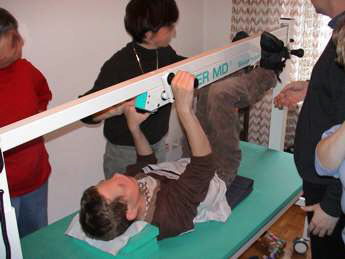
Because
of measured phase and frequency coordination in the process of neuronal
network organization in man, the theory of coordination dynamics is used for
re-learning motor, vegetative, and higher mental functions. The re-learning
(repair) is seen as a change of the existing inner coordination dynamics
tendencies after the lesion (with no or only pathologic functioning of arms,
legs and trunk) to achieve CNS coordination dynamics which will generate
again physiologic movements, vegetative and higher mental functions.
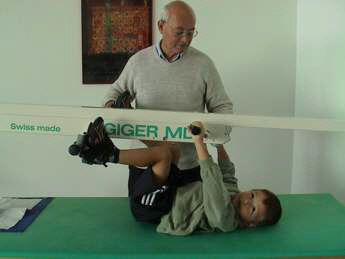
The change of the coordination dynamics is
achieved by the coordination dynamic therapy, especially by the GIGER MD®
medical device.
The
improvement of the coordinated movement of an arm, finger or leg can be
measured. The improvement of the average coordination dynamics when
exercising on the special coordination dynamic therapy device can be used to
quantify the improvement of the inner coordination tendencies on the
macroscopic level.
back to the top
|
![]()
